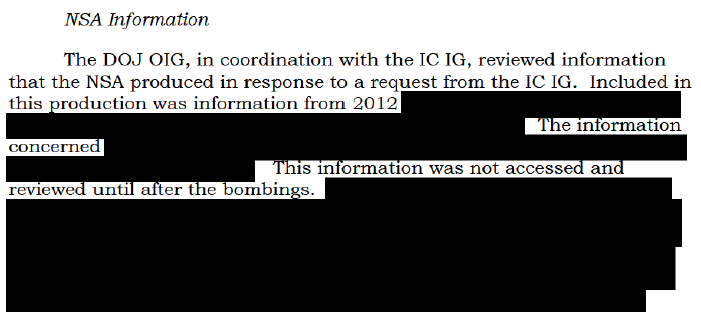The CIA’s [redacted] Operations
As you read the Awlaki memo, it’s worth remembering why it was written, after David Barron had already written a memo authorizing Anwar al-Awlaki’s killing 5 months earlier. In April 2010, as newspapers reported that Awlaki had been added to the CIA Kill List (having been added to the JSOC one either in December 2009, before they tried to kill him on Christmas Eve, or in January 2010, when Dana Priest reported it), international law scholar Kevin Jon Heller wrote a blog post arguing that it would be murder for CIA to kill Awlaki.
The Obama administration has been savagely criticized for authorizing the CIA to use lethal forceagainst Anwar al-Awlaki, a US citizen who is allegedly a member of al-Qaeda in Yemen. Glenn Greewald, for example, has described the decision — justifiably — as “unbelievably Orwellian and tyrannical.” To date, however, critics have ignored what I think is perhaps the most important point:An American who kills an American outside of the United States is guilty of murder. Not political murder. Not figurative murder. Legal murder.
(a)Definition.— In this section, “national of the United States” has the meaning stated in section 101(a)(22) of the Immigration and Nationality Act (8U.S.C. 1101 (a)(22)).
The foreign-murder statute has to be the starting point of any analysis of the Obama adminstration’s decision to authorize the CIA to kill al-Awlaki. If the CIA does kill him — and even if it doesn’t; see below — any CIA operative involved in the killing who is American is presumptively a murderer. The only questions would be (1) whether for some reason 18 USC 1119 would not apply, and (2) whether the CIA operative would have a plausible defense if he was charged with murder in federal court.
In response to this post, David Barron felt the need to reconsider the question.
The main point was to determine whether the CIA — not the government generally — could kill Awlaki.
And the memo seems to betray uncertainty about whether they’ve really proved their case.
Consider the length. Barron takes 10.5 pages to consider whether DOD could kill Awlaki, and somewhat unsurprisingly finds that soldiers whose job it is to kill the country’s enemies can kill someone who has been deemed an enemy to his country.
Barron spends just 5 pages considering the far more controversial question whether CIA can kill Awlaki. As was pretty clear Barron would do from the White Paper, he does so by collapsing the difference between soldiers (whose job is to kill our enemies) and CIA (who are prohibited from breaking US law and whose job is not, primarily, to kill our enemies). That is, the argument in favor of soldiers killing stands in for a considered argument for spies killing.
It seems to accomplish this by classifying CIA’s actions as military — though the classification is redacted. See this passage from page 18:
And this passage from page 32:
Given debates that took place afterwards, I think the redacted language may either describe CIA’s actions as Traditional Military Activities or paramilitary activities. It appears by labeling the CIA’s job as such, Barron disappeared the other rules that govern CIA action. But his language in this footnote, doesn’t reflect great confidence his argument is very strong.
We note, in addition, that the “lawful conduct of war” variant of the public authority justification, although often described with specific reference to operations conducted by the armed forces, is not necessarily limited to operations by such forces; some descriptions of that variant of the justification, for example, do not imply such a limitation. See, e.g., Frye, 10 Cal. Rptr. 2d at 221 n.2 (“homicide done under a valid public authority, such as execution of a death sentence of killing an enemy in a time of war”); Perkins & Boyce, Criminal Law at 1093 (“the killing of an enemy as an act of war and within the rules of war.”)
Barron’s confidence in footnote 44 — especially where he argues that the US doesn’t think that unprivileged combatants (which include both CIA and al Qaeda members operating not in uniform) engaging in killing violates the law — appears even more shaky. If that’s true, then someone should go free Omar Khadr, because we argued that his self-defense attempted killing of Americans was illegal solely because he was unprivileged.
That is, it doesn’t appear even Barron believes his own argument.
One other thing that appears to be redacted is the authority for CIA’s actions, in the redacted language following “the CIA would carry out in accord with” …
That language probably refer to the Presidential Finding required before CIA engages in covert operations. That is, critical to this argument appears to be the formula that if the President deems the CIA a military force (and gives them drones) then they get treated — at least according to US law — just like soldiers, even when they’re killing Americans.
That involves an extra step to the formula “if the President authorizes it,” requiring also that he call CIA spies soldiers. But it still amounts to the same argument.



